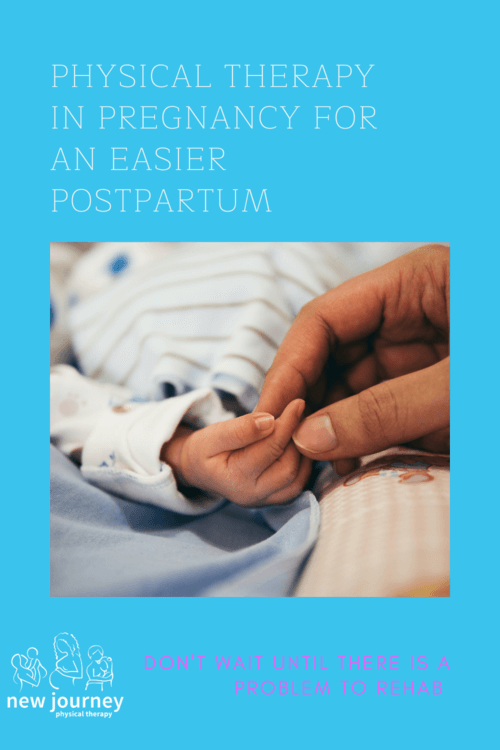What to expect (out of physical therapy) when you're expecting
I hear people, even other physical therapists, say that any physical therapist can treat a pregnant woman. I only partially agree with this. It is true that every physical therapist should have a basic understanding of the pregnant body, but do you really want your physical therapist to only have a basic understanding of your current physical state? Any physical therapist should be able to modify their examination to assess you in pregnancy. This means that they should be able to test your strength and find your pain without needing you to lie on your stomach, but you should be expecting more. Any physical therapist can position you on your side or sitting to perform manual therapy techniques.
The big question is, what else should a physical therapist be offering and including in treatment?
Labor Education:
Education for labor includes teaching how your pain, weakness, or limitations will affect your delivery because pain in one area of your body may limit your recommended labor and delivery positions. You want to know what positions to avoid, or what positions are most comfortable with your current limitations.
Education on how to relax your pelvic floor to ease you pushing phase, and personalized testing and recommendations based on what position(s) your pelvic floor relaxes most effectively. Did you know everyone is aware of their pelvic floor differently in different positions? Some women relax better on all fours or side-lying, others relax well squatting.
Manual Therapy:
Ligament releases to give baby more space in the uterus, ensure your uterus and pelvis are aligned, and reduce asymmetrical pulls on your pelvis.
Teaching you to perform your own manual techniques to stretch your perineum and promote scar healing postpartum. Stretching your perineum prior to delivery reduces rates of tearing, but it must be performed gently and only a couple times per week (I will be doing a video about this soon, so look out for it!). Did you know all scars should be massaged to ensure reduced adherence to underlying layers? Cesarean and perineal scars should be massaged to ensure they move well.
Exercises:
Did you know that pelvic floor contractions increase blood-flow to the pelvic floor? If you tear in delivery, then increased blood-flow means faster healing.
Pelvic floor contractions during pregnancy keeps your muscles strong and healthy while helping you build awareness of an area of your body that women often forget.
Postpartum considerations:
Recommendations for positioning and movement postpartum to reduce further pain and limitations. Your ideal baby feeding position may be different if you have hip or back pain. You may want to utilize certain holding or carrying positions for moving you and your baby around the house.
These are some of the big ways a specialist can help you prepare for delivery and postpartum, but not all physical therapists are trained to provide this additional level of care. If you are ready to start physical therapy for wellness or to treat a pregnancy based limitation then let me know. Let’s schedule your phone consult now so that you can start down the road to recovery.
Talk to one of our physical therapists about your questions/concerns
Learn more about pregnancy based physical therapy with New Journey Physical Therapy



